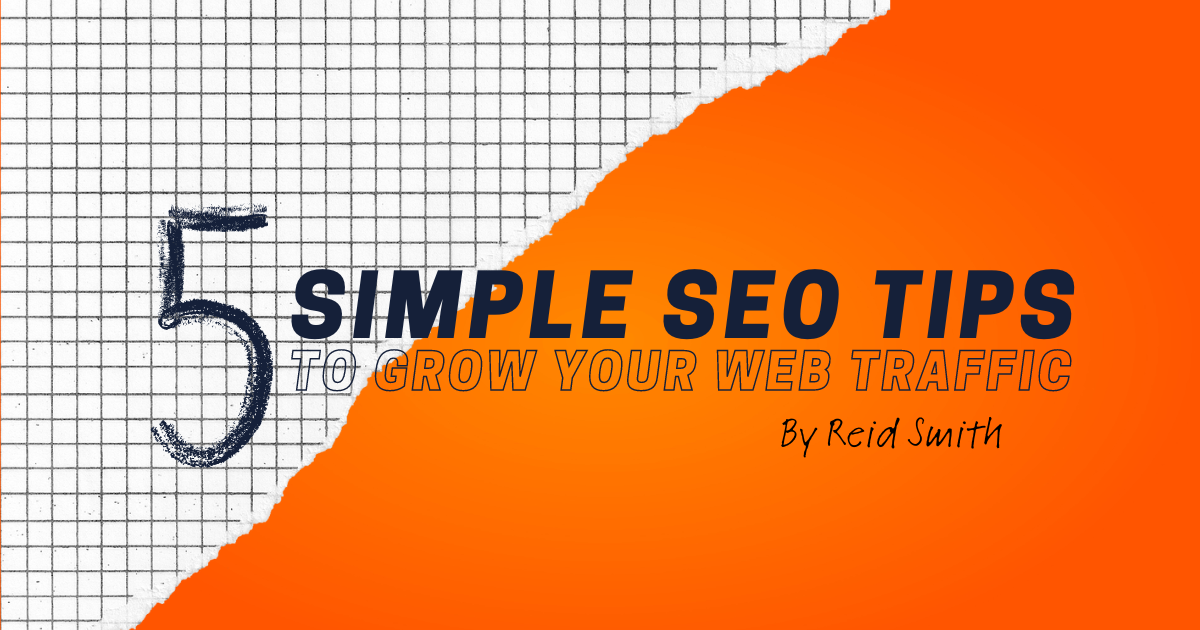Have you ever wondered why some blogs and articles are at the top of Google’s search page, and others don’t show up until page seven? This doesn’t happen by accident. The brands ranking at the top engage in a practice you may have heard of, called SEO. In this article, we’ll talk through the basics of SEO and give you five tips on how you can use it to bring more traffic to your website.
What Is SEO?
SEO is short for Search Engine Optimization, which is the process of improving a website and its content, so it’s more visible to search engines like Google.
Why Is SEO Important?
Writing a blog or article is great, but if it isn’t at least somewhat optimized for search engines, there’s little chance it will make the impact you want for your business.
To add to that, it’s not just being ranked by Google that’s important; it’s being ranked on the first page. Studies show 75% of Google searchers never click past the first page when looking for something, so having your content as one of those top 8–12 results is crucial.
How Do I Make My Content SEO-friendly?
Google uses an advanced algorithm to select and order the content that appears on their Search Engine Results Page (SERP). Many people have tried to pin down the exact algorithm Google uses to do this, but it’s locked up tightly at the GooglePlex in Mountain Valley. Instead of fixating on this algorithm, Google urges content creators who want to rank highly to simply focus on creating engaging content that people want to read.
While that’s definitely the most important part, there are other things you can do to help your SEO standings. Here are five of the most tried and true SEO tactics that can help your content rank higher:
- Select Your Keyword: If you want to rank highly on Google, you need to choose a keyword and focus your content around that. It’s important to use this keyword throughout your content, but don’t overuse it to the point that it becomes oversaturated and awkward to read. This is known as “keyword stuffing,” and it’s one of Google’s biggest SEO no-no’s.
- Use Quality Links: Using both internal links to other pages on your company’s site and external links to trusted sources is a great way to boost your SERP ranking by showing Google that your content is authentic and researched.
- Be Mobile-friendly: Since early 2015, Google has made mobile-friendliness a big part of their SEO rankings. Make sure your web content is optimized for mobile devices. You’ll want to test your content on a mobile device to see if there are any errors with its visual presentation or load speed. Addressing these problems will give your content a big boost in the SERP rankings.
- Structure Your Content: Structuring your content means using bullets, numbered lists, and most importantly, heading tags (H Tags) to lay out your content, so it’s easy for readers to quickly scan and find what they’re looking for. Google’s main goal is to help searchers find the answers to their questions quickly and easily. Structuring your content helps Google achieve that goal while also getting your content in front of more people.
- Use ALT tags: An ALT tag is a piece of HTML code that describes the contents of an image or visual. This is useful in case the viewer has a slow internet connection and the image can’t load, or if they have a disability that requires them to use a screen reader. Additionally, ALT tags help Google properly index content with images, which can in turn boost your rankings. The other piece of good news is that you don’t need to worry about manually coding ALT tags. Most content management systems give you the ability to assign an ALT tag to an image without having to manually input code.
While following these tips is a great way to get started, we’re just scratching the surface of how your company can utilize SEO to grow your web traffic. If you’re interested in setting up a complete SEO and content strategy for your organization, reach out. LMD’s team of experts can work with you to come up with a plan that’s unique to your organization’s goals.
As a writer and editor, Reid supports LMD’s work with the Office of Personnel Management (OPM). Using his 5+ years of technical and content writing experience, Reid supports training and change management initiatives across OPM. Reid also has experience implementing content strategy, producing video content, conducting SEO research and managing social media accounts for multiple brands. Reid graduated from Kent State University with a B.S. in Advertising.
